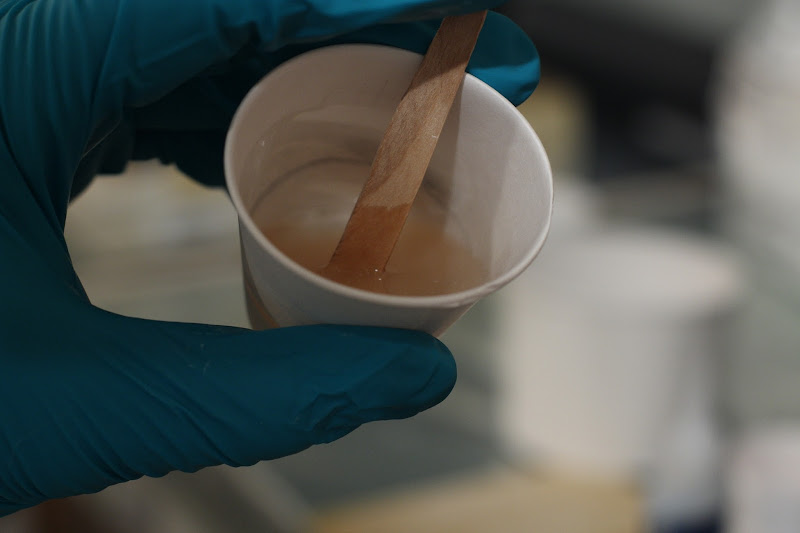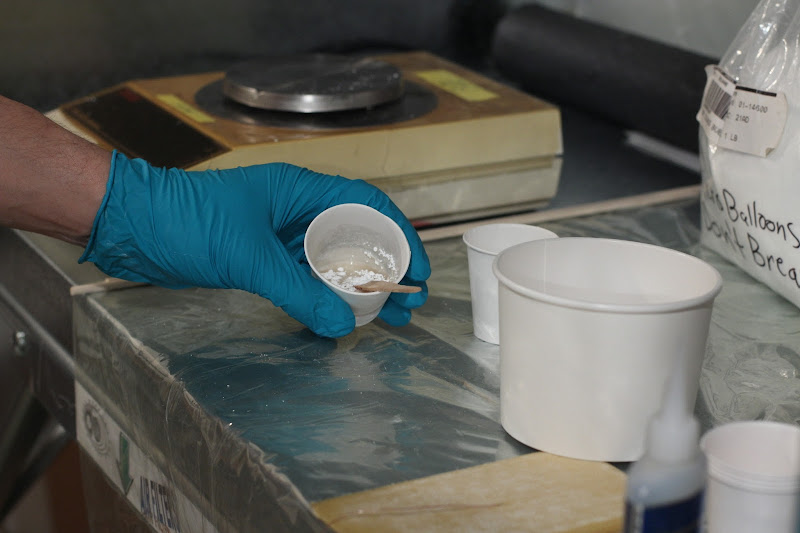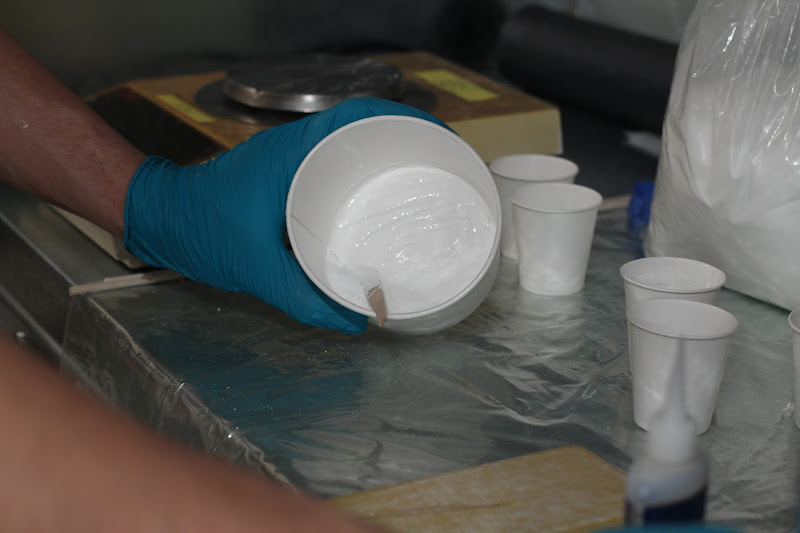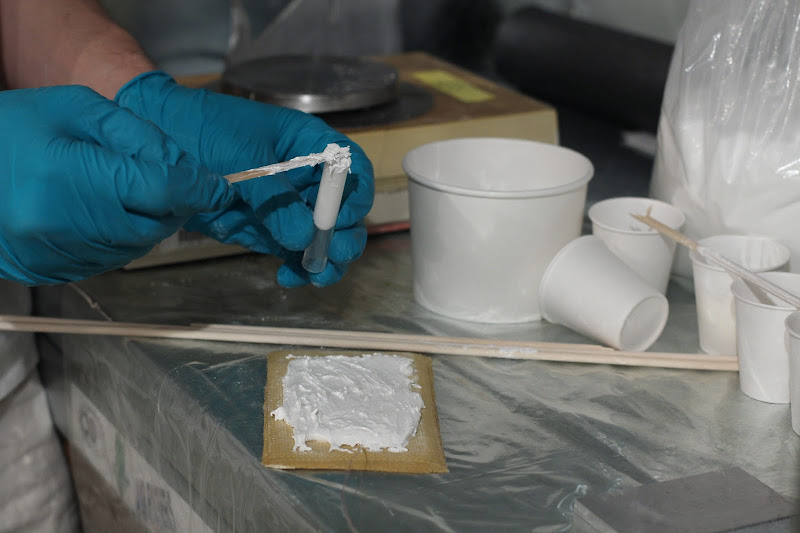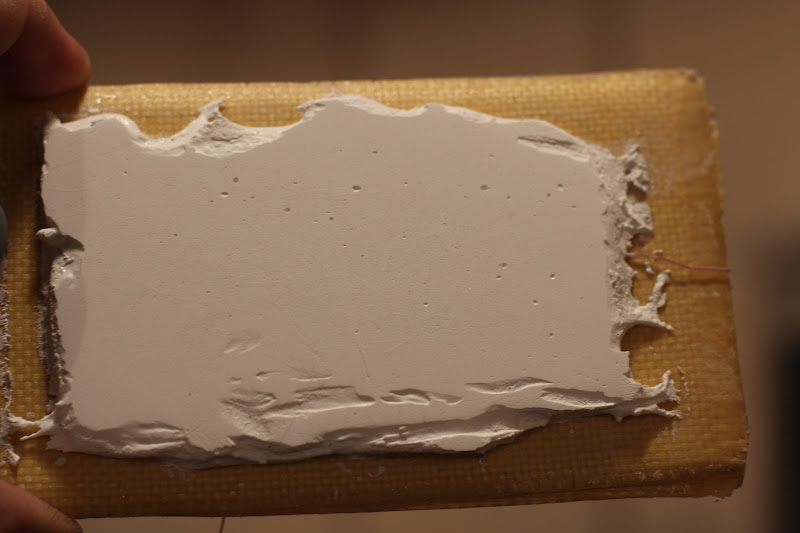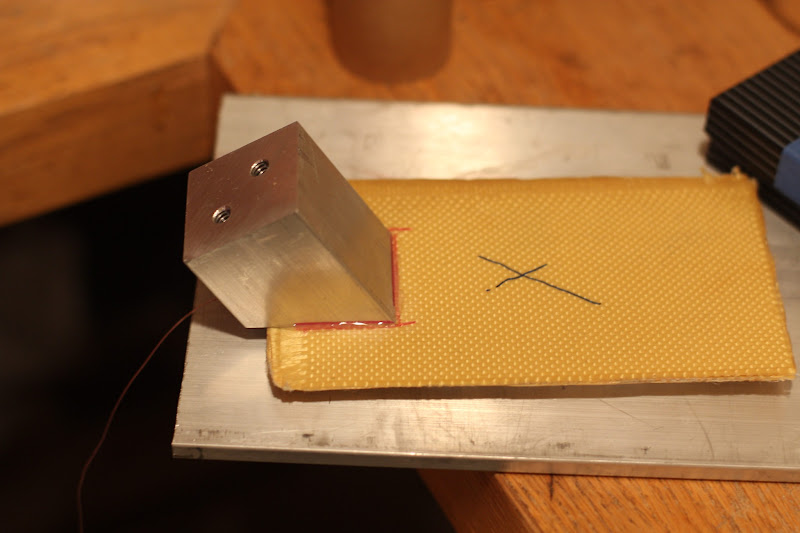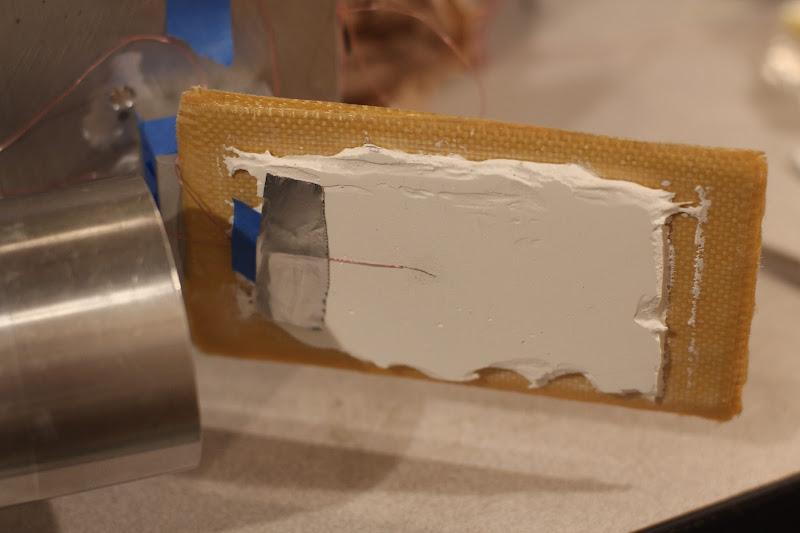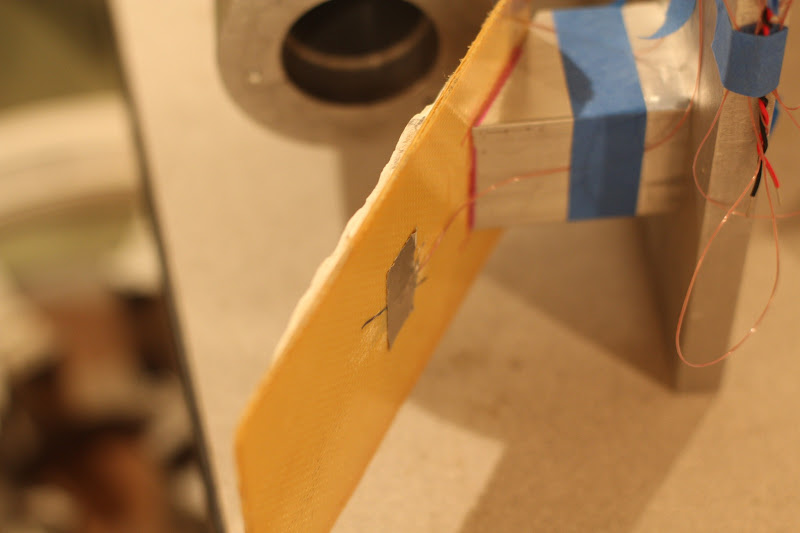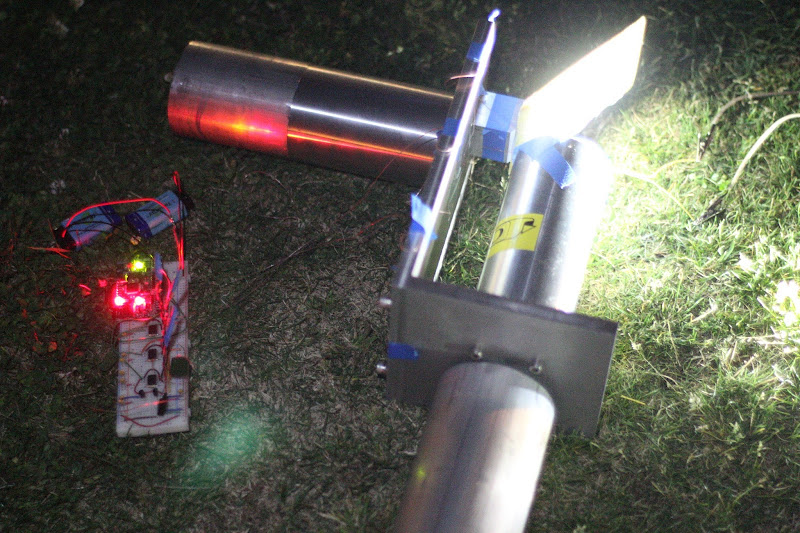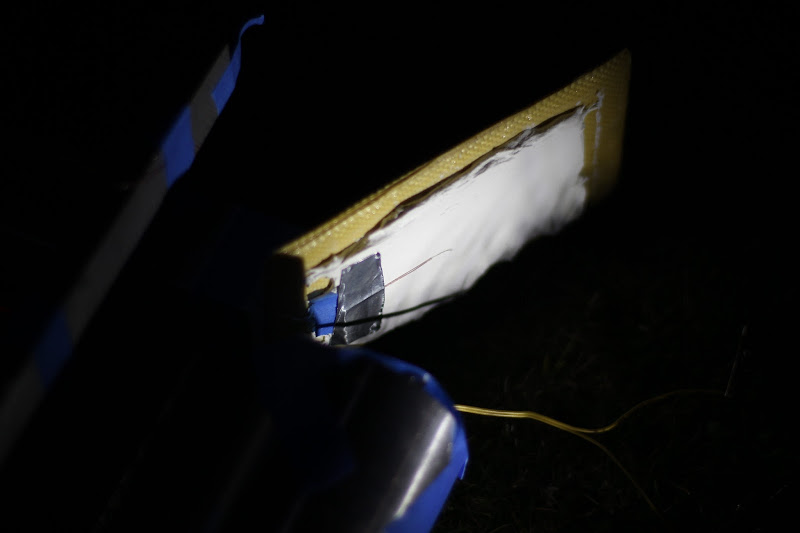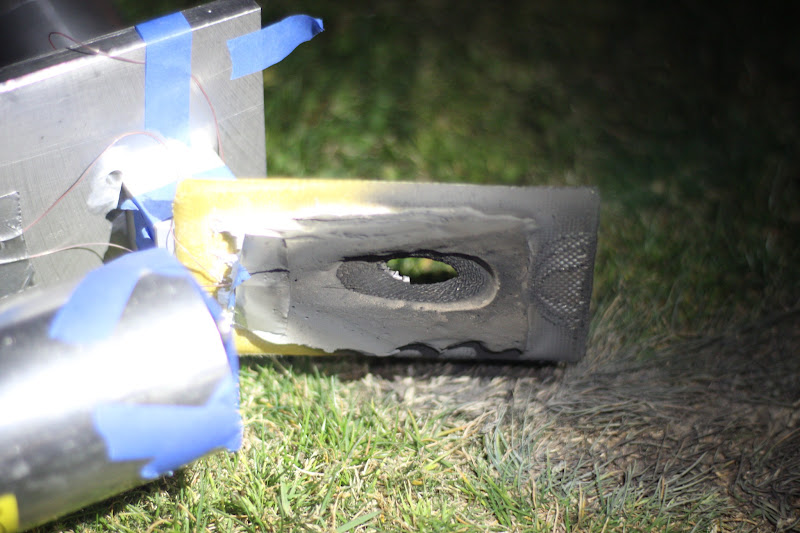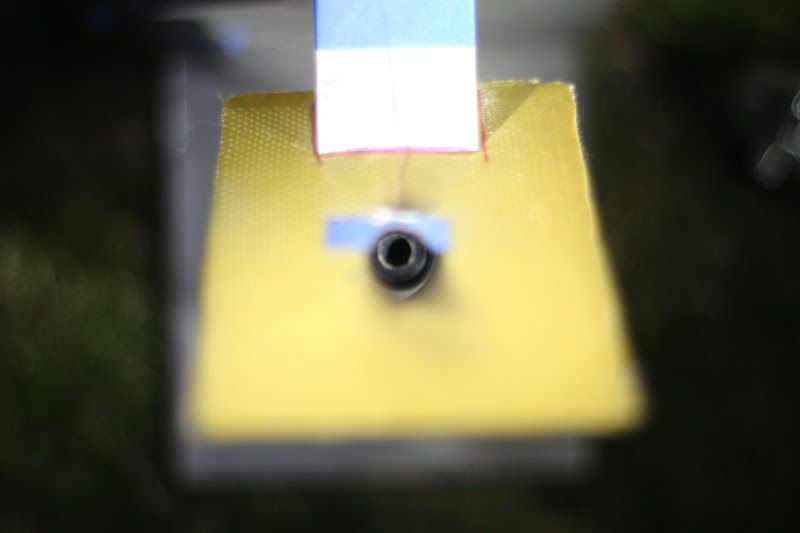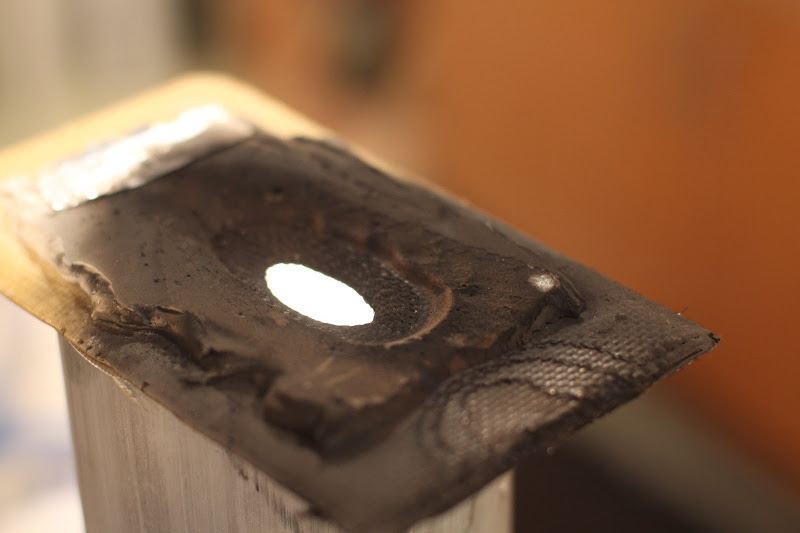CCotner
Well-Known Member
- Joined
- Sep 4, 2012
- Messages
- 888
- Reaction score
- 3
Hi! I am announcing that in the next few days we will be conducting a somewhat crude ablation rate test. The test setup is illustrated in the following Drawing; we are basing it off of existing scrap material and some static test hardware that we have lying around in the Experimental Engineering class lab.
The ablation target will consist of a .125" thick laminate of plain-weave 5.6oz Kevlar, with 300F post-cured PTM&W 5712 epoxy. This is our current nosecone wall design for Bare Necessities, at least the structural part. On top of the Kevlar is a .25" thick layer of our test ablative. The ablative mixture ratios will be determined partly by workability when we do the ablative layup later this week, but the base will be a laminating epoxy, either Aeropoxy 2032/3660 (Tg, and presumably T_ablation, of ~200F) or partially post-cured PTM&W 5712 (with a Tg/T_abl or ~275F). The advantage of using a lower Tg epoxy as the base than the underlying structure is that it limits the temperature rise of the entire assembly to the ablation temperature of the ablative, protecting the underlying structure. The additives to make ablative will be ~25% by mass (~25% of the epoxy mass) TiO2 powder (for infra-red opacity), and then glass hollow microballoons to the perfect-packing state (about 3:1 by volume). The final material when mixed will be a thick dry paste.
The ablator (so to speak) will be an Aerotech I49N motor. This was chosen because of the high exhaust velocity, very low metals loading (clean burning exhaust), and long burn time/low thrust (meaning we don't have to reinforce the existing frame or the sample). The sample will be placed at a 30 degree angle to the motor, as shown in the image, and the impingement point (center of the exhaust jet) will be directly over the center of the sample. We have 2; we will probably fire both in series, unless the ablation rate is extremely high.
For data collection, a trio of Type-E 40Ga thermocouples will be recording at a few kHz on our shiny new class dataloggers (16-channel, 16-bit, 300kS/s (kHz)), along with a CJT (linearized thermistor). One will be on the surface of the ablative; one will be at the bottom of the ablative; and one will be at the back side of the laminate. All will be directly underneath the target point. We expect the first one to be destroyed. Finally, a GoPro Hero 3 Black will be a few inches away (or the minimum focus distance away), recording at 480p and 240FPS. One of us will also probably video-record the process at 720p and 60fps on a tripod from our DSLRs (using a telephoto lens), and possibly take stills as well.
As the results of this experiment will likely be useful and interesting for others on this forum with an interest in pushing composite rockets past Mach 3, we will try to post our results here in a somewhat-timely manner.
View attachment AssemblyDiagram.PDF
The ablation target will consist of a .125" thick laminate of plain-weave 5.6oz Kevlar, with 300F post-cured PTM&W 5712 epoxy. This is our current nosecone wall design for Bare Necessities, at least the structural part. On top of the Kevlar is a .25" thick layer of our test ablative. The ablative mixture ratios will be determined partly by workability when we do the ablative layup later this week, but the base will be a laminating epoxy, either Aeropoxy 2032/3660 (Tg, and presumably T_ablation, of ~200F) or partially post-cured PTM&W 5712 (with a Tg/T_abl or ~275F). The advantage of using a lower Tg epoxy as the base than the underlying structure is that it limits the temperature rise of the entire assembly to the ablation temperature of the ablative, protecting the underlying structure. The additives to make ablative will be ~25% by mass (~25% of the epoxy mass) TiO2 powder (for infra-red opacity), and then glass hollow microballoons to the perfect-packing state (about 3:1 by volume). The final material when mixed will be a thick dry paste.
The ablator (so to speak) will be an Aerotech I49N motor. This was chosen because of the high exhaust velocity, very low metals loading (clean burning exhaust), and long burn time/low thrust (meaning we don't have to reinforce the existing frame or the sample). The sample will be placed at a 30 degree angle to the motor, as shown in the image, and the impingement point (center of the exhaust jet) will be directly over the center of the sample. We have 2; we will probably fire both in series, unless the ablation rate is extremely high.
For data collection, a trio of Type-E 40Ga thermocouples will be recording at a few kHz on our shiny new class dataloggers (16-channel, 16-bit, 300kS/s (kHz)), along with a CJT (linearized thermistor). One will be on the surface of the ablative; one will be at the bottom of the ablative; and one will be at the back side of the laminate. All will be directly underneath the target point. We expect the first one to be destroyed. Finally, a GoPro Hero 3 Black will be a few inches away (or the minimum focus distance away), recording at 480p and 240FPS. One of us will also probably video-record the process at 720p and 60fps on a tripod from our DSLRs (using a telephoto lens), and possibly take stills as well.
As the results of this experiment will likely be useful and interesting for others on this forum with an interest in pushing composite rockets past Mach 3, we will try to post our results here in a somewhat-timely manner.
View attachment AssemblyDiagram.PDF





